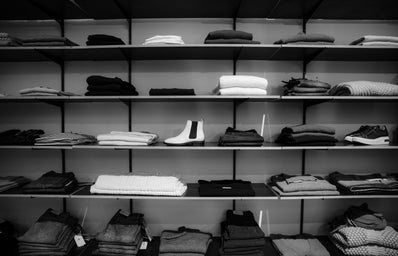Around 20 years ago, Abercrombie & Fitch was at the peak of its popularity as a fashion brand. Today, the company looks drastically different. The diversity and inclusion page on the website, gender-inclusive clothing and progressive social media pages all succeed in a much more “exclusive” aesthetic that once stood in its place.
Abercrombie Co. was founded in 1892, originally as an outdoor retailer that sold camping and hunting gear. In 1992, Mike Jeffries became CEO of Abercrombie & Fitch and created ad campaigns with provocative images and barely clothed models to garner the public’s attention. These photos were usually taken by Bruce Weber, a fashion photographer, who has since been accused of sexual exploitation by numerous models. He denies these allegations.
After the drop of a new Netflix documentary White Hot: The Rise & Fall of Abercrombie & Fitch, the popular brand name has appeared in the news once again. Only this time, unlike its reigning era in 2009, the attention is spotlighted on the nosedive of the brand, not its successes. It reflects on the peaks of the clothing brand that dominated an entire generation before controversies dragged it down. Throughout the 88-minute long film, former Abercrombie models, employees, recruiters and executives are interviewed about their candid experiences.
Explained by Washington Post‘s senior critic-at-large Robin Givhan in the documentary, Abercrombie’s ineffaceable success was attained by a simple equation: Integrating the sex appeal of Calvin Klein with the elite preppiness of Ralph Lauren at prices more affordable for the public than both.
After highlighting Abercrombie’s major successes and how the brand got to be, White-Hot dove into Abercrombie’s first controversy. In 2002, a t-shirt with caricatured faces, slanted eyes, rice hats and the phrase “Two Wongs Make a White” was placed on Abercrombie’s shelves. The Asian-American communities boycotted the brand. Phil Yu, author of the “Angry Asian Man” blog said, “It’s all this stuff taken from people’s [pop culture orientalism] understanding of Asians.”
Robin Givan also said, “No other mall brand went to the extreme that Abercrombie did in micromanaging the look of everything from the store down to the person who was cleaning up the stockroom.” After interviewing people who had Abercrombie & Fitch on their resume, Moe Tkacik, a journalist featured in White Hot concluded “most people were reunited for the job on the basis of their looks. It didn’t matter what your sales were. All that mattered was that the employees that you took pictures of and sent back to headquarters were hot.”
Benjamin O’Keefe, who fought for Abercrombie size inclusion by starting a viral petition to boycott the brand in 2013, said, “Discrimination was their brand. They rooted themselves in discrimination at every single level.”
In June 2003, a group of eight former employees sued Abercrombie & Fitch for race and sex discrimination. The company settled the following year, and although it never admitted guilt, it had to pay out $40 million to the plaintiffs. In addition, they had to sign an agreement to promote diversity across the brand. In the documentary, employees that worked for the company at the time said nothing truly changed.
Several of the plaintiffs appear in Netflix’s documentary and share their experiences of discrimination as Black, Asian American and Hispanic employees: either their hours were reduced, they were fired or they were forced into backroom roles on account of their appearance. After allegations, business began falling, and their stock dropped to the bottom 10 percent. In 2014, Michael Jeffries left Abercrombie and Fitch with $27M in cash and retirement benefits.
Today, Abercrombie claims it is no longer the company that it used to be, and its social media reflects that. Nonetheless, Robin Givhan said it best: “You don’t want your brand to run white-hot because white-hot brands always burn out.”
Want to see more HCFSU? Be sure to like us on Facebook and follow us on Instagram, Twitter, TikTok, YouTube and Pinterest!


